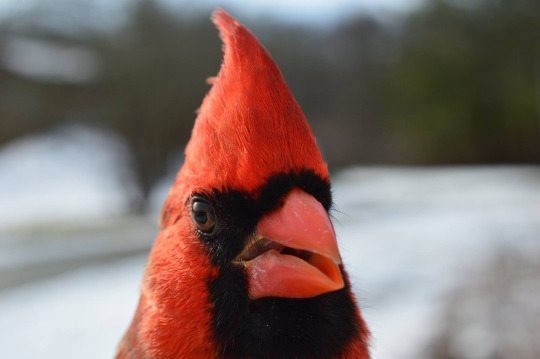
by Jonathan Rice
Many of us are excited that spring is just around the corner, and that includes the birds. As springtime comes into view, male birds, both residential and migratory, begin setting up and fighting over territories for the breeding season. This means males are more likely to call at and scold (an aggressive-natured call) other males of any species until they leave the territory.
This poses interesting problems for song birds, such as northern cardinals whose breeding plumage is bright red and can
often be reflected in windows (on cars or homes) and even side view mirrors. There have been reports of northern cardinal males flying into windows or side view mirrors over and over and over again, multiple times a day.
This may seem confusing and counterproductive to us, but to an enraged male, seeing another male in his territory can mean the end to his breeding season. So he fights the intruder—who is actually his reflection—but as he fights, his reflection fights back. This often causes a loop to form where the male fights his reflection, getting angrier as the reflected intruder never leaves.
While this sort of behavior does not normally end in fatality, it is a good representation of how windows can be deadly to birds. If a reflection is real enough to confuse a cardinal into attacking itself, other birds are likely to fly into windows thinking that vegetation or sky reflected in them are real.
Jon Rice is a seasonal tech at Carnegie Museum of Natural History. Museum employees are encouraged to blog about their unique experiences of working at the museum.
